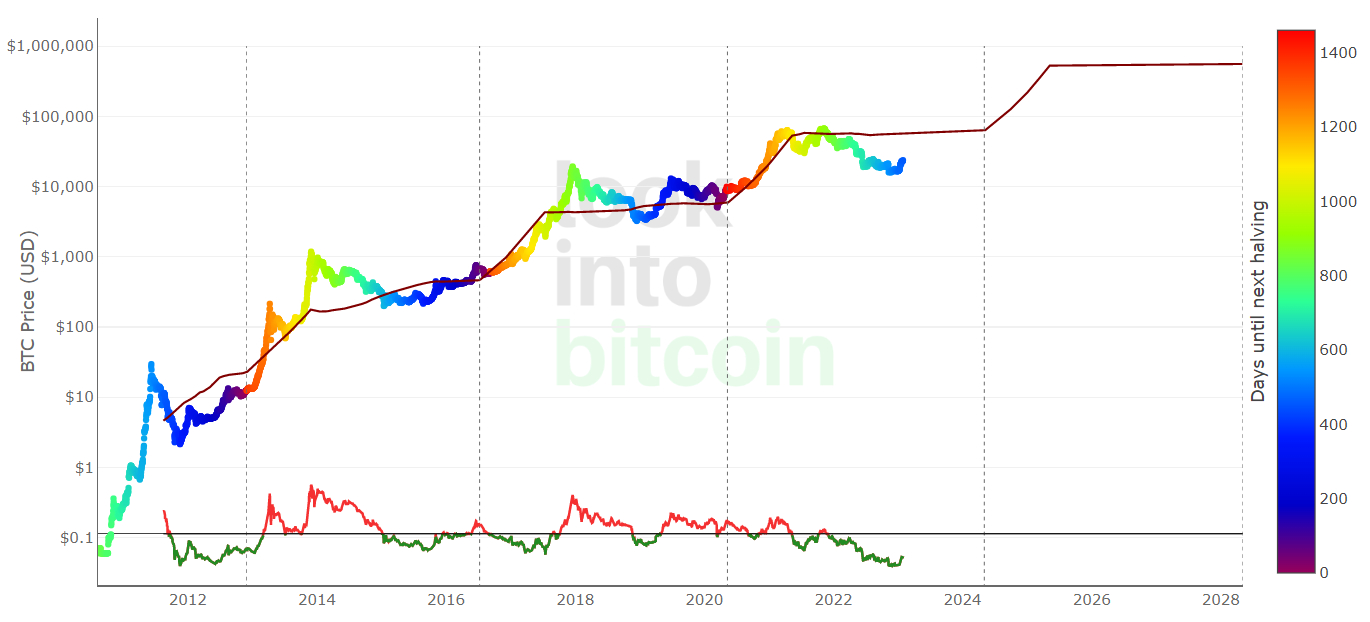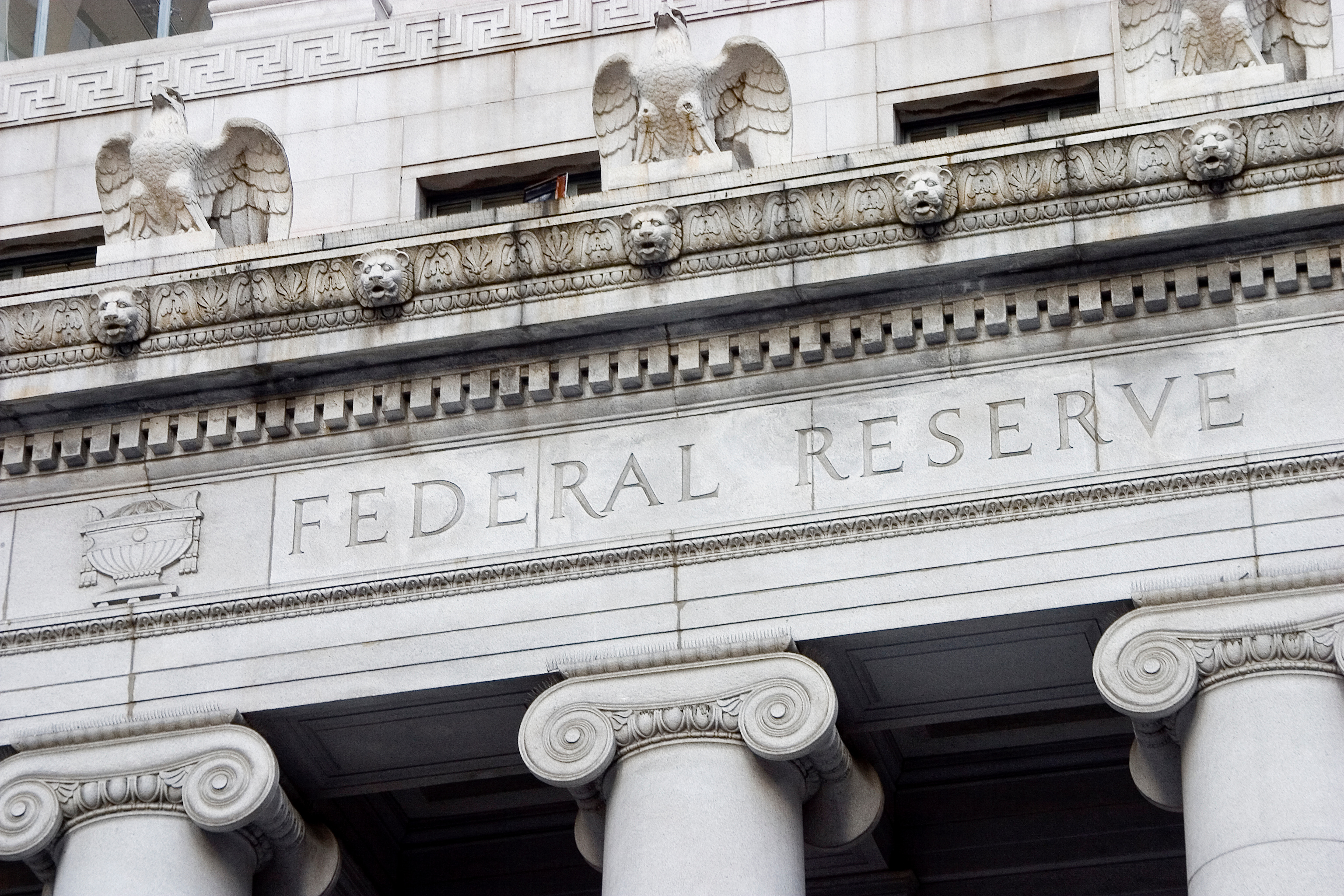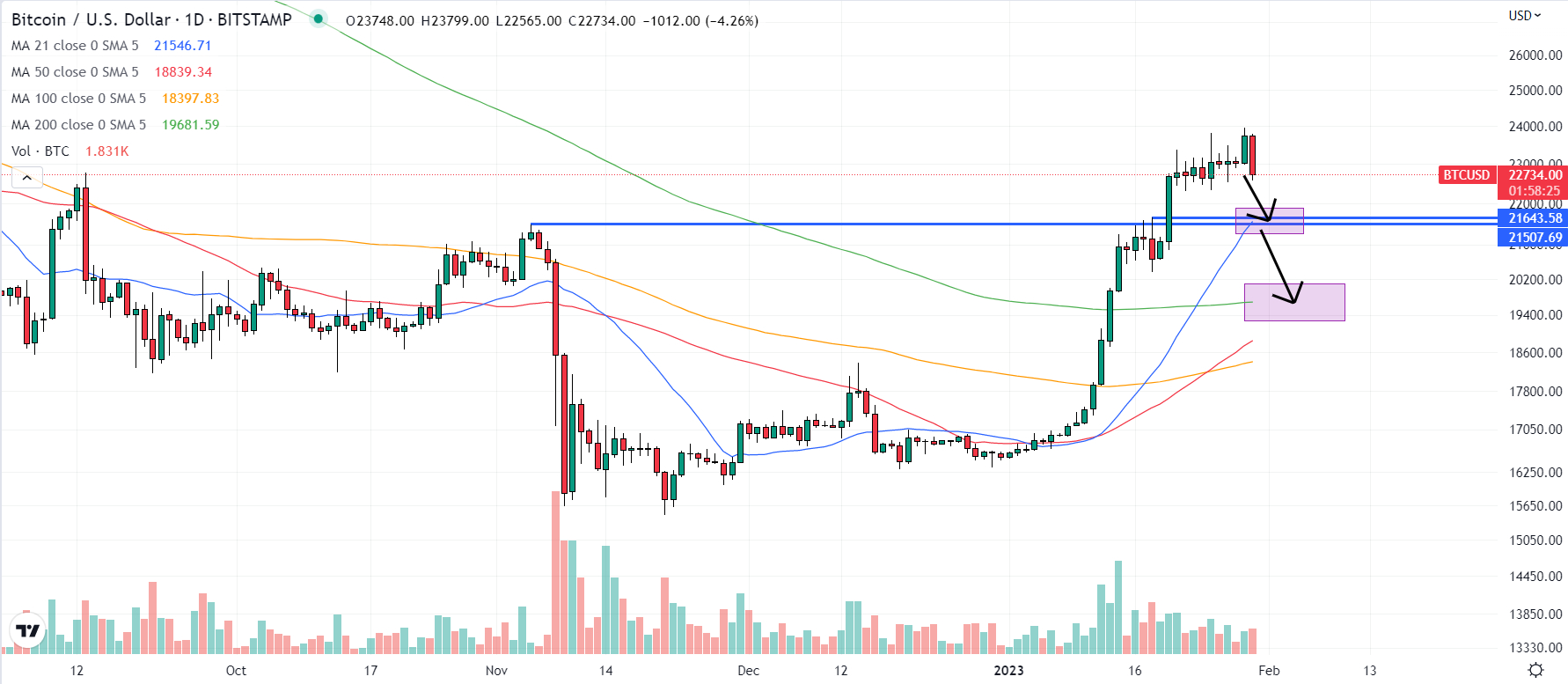On-chain Metric Flashes First Bitcoin Buy Signal Since 2019 – Here is What You Need to Know

According to crypto data analytics firm CryptoQuant, an on-chain metric is giving off a definitive Bitcoin buy signal for the first time since 2019. CryptoQuant’s Profit and Loss (PnL) Index, an index constructed from three on-chain indicators relating to the profitability of the Bitcoin market, recently crossed back above its 365-Day Simple Moving Average (SMA) after a prolonged spell below it.
The PnL Index chopped either side of its 365-Day SMA in 2020 and 2021. The last time it broke decisively to the north of its 365-Day SMA after a prolonged period below it was back in 2019, a few months after the market had bottomed. “The CQ PnL Index has given a definitive buy signal for BTC,” CryptoQuant note, before stating that “the index crossover has implied the start of bull markets in past cycles”.
“It is still possible for the index to fall back below,” CryptoQuant cautioned in a blog post. But the Bitcoin bulls will be adding this indicator to a growing list of other on-chain and technical signals that are all also flashing bullish signs.
Growing List of On-chain/Technical Indicators Say Bitcoin Bottom Is In
As discussed in a recent article, an increasing confluence of indicators (looking at eight pricing model, network utilization, market profitability and balance of wealth signals) tracked by Glassnode are suggesting that Bitcoin could be in the early stages of recovering from a bear market.
And these aren’t the only on-chain indicators flashing signals of an incoming bull market. According to analysis posted on Twitter by @GameofTrade_, 6 on-chain metrics including the Accumulation trend score, Entity-adjusted dormancy flow, Reserve risk, Realized price, MVRV Z-score and Puell multiple are “calling for a generational long-term buying opportunity”.
Meanwhile, analysis of Bitcoin’s longer-term market cycles also suggests that the world’s largest cryptocurrency by market capitalization might be in the beginning stages of a near-three-year bull market. According to analysis from crypto-focused Twitter account @CryptoHornHairs, Bitcoin is following exactly in the path of a roughly four-year market cycle that has been respected perfectly now for over eight years.
Elsewhere, a widely followed Bitcoin pricing model is sending a similar story. According to the Bitcoin Stock-to-Flow pricing model, the Bitcoin market cycle is roughly four years, with prices typically bottoming somewhere close to the middle of the four-year gap between “halvings” – the Bitcoin halving is a four-yearly phenomenon where the mining reward gets halved, thus slowing the Bitcoin inflation rate. Past price history suggests that Bitcoin’s next big surge will come after the next halving in 2024.

But Macro Headwinds Could Send Prices Lower This Week
All of the above-noted indicators suggest Bitcoin is currently a great long-term buy. It’s important to stress the “long-term” here. That’s because the macro headwinds that pummelled the world’s largest cryptocurrency by market capitalization have not completely disappeared just yet.
Indeed, multiple macro strategists have noted that, going into this week’s crucial Fed policy announcement, there is a significant risk that markets may be underestimating the Fed’s resolve to 1) continue raising US interest rates and 2) hold them at elevated levels for some time.
Money markets are currently pricing that the Fed delivers just 50 bps in further rate hikes – one on Wednesday (taking rates to 4.50-4.75%) and one in March (where rates then peak at 4.75-5.0%). Markets then expect a cutting cycle to begin in earnest before the end of 2023.

Now, such market pricing isn’t ridiculous – inflation in the US is dropping rapidly and looks likely to soon fall back to the Fed’s 2.0% target, while multiple economic leading indicators are flagging the likelihood that the economy enters recession later this year. The market’s view appears to be that the Fed will want to start easing to support growth.
And if the market’s expectations about the economy are right, then the Fed probably will start easing later this year. But, judging by recent commentary from officials, the Fed is nowhere near ready to signal an easing bias. The 2021 “transitory” inflation debacle badly damaged the central bank’s credibility, and the Fed wants to continue to signal an intent to take a tough stance on inflation.
Fed Chair Jerome Powell and co. may well signal that the bank intends to press ahead with more than another 50 bps in rate hikes, which would jolt markets, especially risk assets, in the short term. Bitcoin’s big January run-up could stumble on the first day of February in such an instance.

Technicians have flagged a lack of major support levels ahead of the $21,500 area, which could easily be retested in such a scenario. A retest of $20,000 and the 200-Day Moving Average and Realised Price just below it should also not be ruled out. What would be most interesting would be how Bitcoin would respond at such levels. Given all of the above indicators signaling that the bear market is over, many dip buyers may be eager to get their hands on Bitcoin at $20,000 once again.












